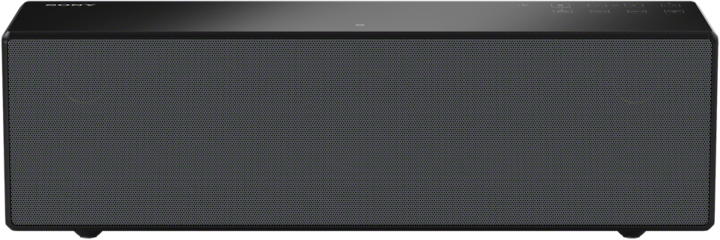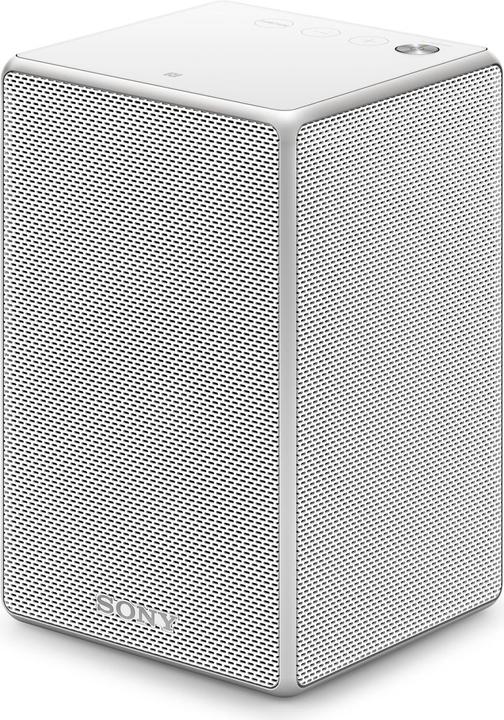

Sony Multiroom - What can't this thing actually do? Leave me alone!
Sony not only makes PlayStations, but also pretty much everything else that needs power. The Japanese manufacturer is clever in that it wants users to be able to have an entire Sony ecosystem in which all devices work together. This is precisely the greatest strength and the greatest weakness of the Multiroom system.
The PlayStation can work with the TV and the home cinema. The mobile can work with the laptop and the watch. And everything must be able to work with the multiroom system. In technical terms, this is called "seamless interoperability", which sooner or later will be the future of our technology. Because if every device can communicate with every other device, our lives will become easier. Imagine that there are things like the computer from Star Trek, which you can simply give any command to, from "Make me tea" to "Fire phasers at Klingons. Then make me some tea". That's cool, isn't it?
But there's still a long way to go and our best chance at the moment is open operating systems like Android or, to a lesser extent, Linux, as well as big technology companies that make everything. Sony is one of them. That's why testing the Multiroom system - a solution that sends audio to speakers distributed across a network via WiFi - is a good idea. Exciting when interoperability comes into play.
An L-shaped box
Sony's multiroom system promises a lot. No matter how it makes sound, be it Bluetooth, via headphone output or via a network, the sound can be played via the multiroom system. Spotify and other streaming services, local music, TV audio - no problem according to the advertising and technical data.
Therefore, a test setup is needed.
The first thing that catches the eye is that the box with the soundbar and subwoofer is L-shaped, like a Tetris brick. Not only does it look funny, but it also has the pleasant side effect of making transport quite easy. The handles are attached to the lower end of the L - i.e. the horizontal bar in the written letter. I would also like to point out that I appreciate Sony saving on packaging. It would have been easy to just make a rectangular box and leave it at that.
But not only did Sony leave out about a third of a rectangle, they also left out the HDMI cable. In the other multiroom systems that I have tested so far, the cable was also not included, but was also not necessary. With Sony, however, the HDMI cable is necessary to set up the soundbar. This is because the soundbar is primarily a separate system that interacts seamlessly with the multiroom speakers. It must therefore be connected to the TV so that the setup can be carried out via the graphical user interface on the TV screen.
Therefore:
The setup of the soundbar itself is easier than the cabling. Press a button here and there and you're done.
The multiroom speakers, which are intended as multiroom speakers, i.e. the analogue 1, 3 and 5 series from the competition, do not need any further cabling. Power plug and that's it. The setup shows for the first time that Sony has built a system that aims to be a universal solution for everything. Not only can you finalise the setup by physically pressing a button, but also via NFC. I tried this out straight away, as I already have enough experience with pressing buttons on speakers. It works quite well. It helps if you know roughly where the NFC transmitter unit is installed on your mobile phone, but otherwise you can simply rub your mobile against a speaker until the input is accepted. I'm sure any of the other authentication methods would have been easier and faster, but hey, NFC. High tech and all. Must be tried.
The app of unlimited possibilities
The app you need to control the multiroom elements plus soundbar is called SongPal and is compatible with Android and Apple iOS, albeit controversially discussed by users. The term "buddy" does not do justice to the extent of its functionality, as the song buddy can do much more than the apps from the competition. Grouping speakers and so on is part of the minimum configuration, but SongPal goes one step further. You can make your own equaliser settings for each room, which are far removed from any preset and therefore best suit your room. Provided you know what you're doing.
The app is complex, perhaps too complex. According to the release notes, features come and go, sometimes they don't work and then they're perfect again. No wonder, given the complexity, which goes far beyond a simple software application.
On the other hand, this already shows that Sony has not understood the basic idea of a multi-room system, or has deliberately ignored it. A multi-room system, as the competition dictates, is simple. Set up the speakers, set up and then it just works forever, unless the network fails. Sony, however, wants the user to interact with the devices on a regular basis. This is not only noticeable on the software side, but also on the hardware side.
Everything shines so brightly
The modes themselves are also designed for users to interact with them regularly. The modes are not all active by default. So, if you want to play music via Bluetooth but have previously used Spotify, you have to physically change the mode on the speaker. This removes one of the nicest features of a multiroom system: the hidden mode. If you want to, you can put the speakers somewhere on the top shelf of your bookshelf and then you never have to worry about them again. The sound comes from somewhere in the room and you can easily control it all from your smartphone.

The user interface on the speakers is deliberately kept simple and intuitive. Unfortunately, the small speakers, i.e. the 1 series, rely on an LED display that cannot be switched off. This makes the speakers quite awkward to use in the bedroom. They are simply too bright for me. Although all the multiroom systems I've tested have more or less large LEDs that essentially say "Yes, I'm on", Sony's system is the only one on which I can't switch off the LED. Why should I, when the LED is essential to the basic function of the speaker.
The sound
This text is actually about the sound of the speakers. There are really no complaints. The tweeters are clean, the bass is muffled, just the way I like it. And if I don't like it, I can simply adjust the equalisers and go in search of the perfect sound myself.
Furthermore, it's really great that I can play from any device that can send out audio signals wirelessly in any form - and with cables too, while we're at it - from the Sony Multiroom system. That makes life much nicer. In general, Sony has clearly achieved its goal. With its Multiroom system, the Japanese manufacturer has managed to create an extension for every home ecosystem.
Only the operation leaves a lot to be desired and the features that affect the non-acoustic perception of the setup should be reconsidered. All in all, the Sony Multiroom system is a great invention for hobbyists and futurists who already want to have a complete acoustic ecosystem that already works across brand boundaries. <p
Journalist. Author. Hacker. A storyteller searching for boundaries, secrets and taboos – putting the world to paper. Not because I can but because I can’t not.


